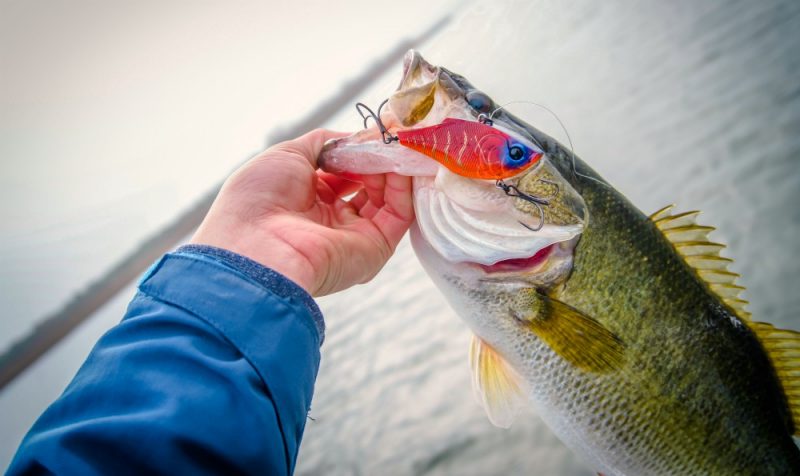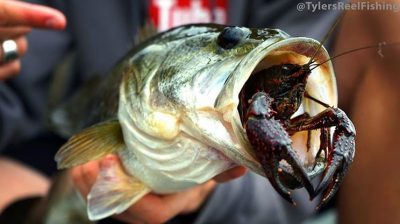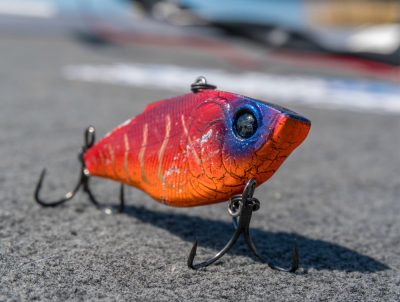Tyler’s Reel Fishing: 3 Keys for Pinpointing Pre-Spawn Bass
OutdoorHub Reporters 03.12.18

The month of March is finally here, and the glacier that once was your honey-hole has FINALLY melted! It’s time to break out the rods and reels, replace some line, and get yourself ready for the fishing season ahead.
Spring is by far the best time of the year to catch both numbers and size of bass, and it’s no coincidence why all major bass fishing tournament trails have the majority of their events during spring — the BIG bass come out to play!
Here’s a little fish biology session for ya: Bass must mate in order to keep the species alive (much like us humans). This action called “spawning” is separated into three periods: pre-spawn, spawn, and post-spawn. In columns later on this spring, I’ll address each of these phases in detail, but today’s discussion focuses on the pre-spawn.

Living in Texas, I rarely get the opportunity to test my skills in water temperature much lower than 50 degrees because our lakes just don’t get that cold. So, the first stage of spring fishing for me is the pre-spawn. If you live in northern states like the ones with frozen lakes that I described above, you’ll face conditions with water anywhere north of the freezing mark.
If your water isn’t above 45 degrees yet, your bass will still be in a winter mood, so I would save this article and advice until it reaches that point. But for the rest of us, I say we jump into the pre-spawn discussion.
The pre-spawn is the time of the year when the bass are biggest, and that is due to several factors. First, the fish need to acquire a lot of food in order to make it through the physically strenuous spawning period. It’s much like how athletes eat a lot of carbs before a game so they have the energy to perform their best. This need for food causes bass to feed like CRAZY, which results in fat, healthy bass. The other reason why bass are so big in the pre-spawn is because female bass are full of eggs. I don’t know the exact science behind it, but almost every female bass over a certain developmental stage starts to produce eggs on a yearly basis. And usually, the larger the bass, the more eggs she can produce.
“Now, how do I go about catching these big ones?” you may ask. It’s simple. I employ a three-step process when I’m targeting bass during the pre-spawn phase:
- Find the water temperature
- Learn what the bass in your lake are eating
- Learn to read your maps
The first thing I always do is check the water temperature. The pre-spawn typically begins when the water reaches 45 degrees, and continues until the water is in the mid-60s. If your electronics are reading 57-degree water, you can be pretty dang sure that the big ones are somewhere, feeding up good!

The second step is finding out what your local bass are feeding on. Most lakes around the South have all sorts of forage types, but the two main sources of food I’ve found most successful to emulate in the pre-spawn, are crawfish and shad. Crawfish thrive in water from 50-70 degrees, so it’s no surprise that they come out to feed during this time period, and bass just can’t resist a tasty crawfish snack (pic above).

Two of my favorite lures to throw to imitate a crawfish in the pre-spawn are the Rat-L-Trap (above) and football jig. In two recent tournaments I fished (videos below), I found success in 48-degree water throwing a football jig, and some added success with the Rat-L-Trap once that water broke the 50-degree mark. I give tips on both of these lures in the videos below; be sure to check them out.
Lastly, to be successful this time of the year, you must be fluent in map reading. What I mean by this is that you must understand the movements bass make from their winter homes to their spring timeshares that they occupy during a few months of the year. I’ll write a blog post soon about how to read a topographical map, but until then, check out the Navionics WebApp.
So, don’t forget to take some days off work this spring, ask the honey to watch the kids for a Saturday or two, and get out on the water for some pre-spawn action. If you have any questions, as always feel free to reach out to me on any social media platform. My desire is to teach you how to catch more fish. Good luck!

